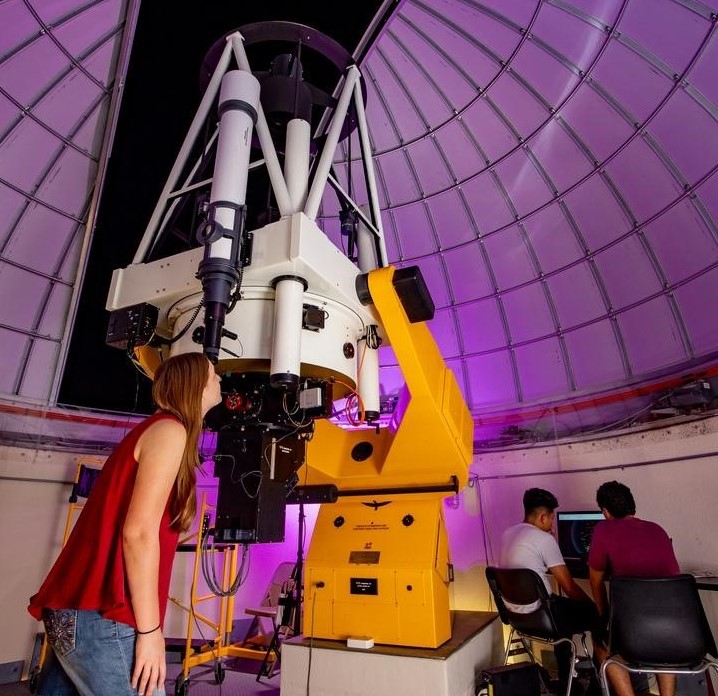Document Type
Article
Publication Title
The Astrophysical Journal
Abstract
The giant radio galaxy M 87 with its proximity (16 Mpc), famous jet, and very massive black hole ((3 – 6) × 109 M ☉) provides a unique opportunity to investigate the origin of very high energy (VHE; E > 100 GeV) γ-ray emission generated in relativistic outflows and the surroundings of supermassive black holes. M 87 has been established as a VHE γ-ray emitter since 2006. The VHE γ-ray emission displays strong variability on timescales as short as a day. In this paper, results from a joint VHE monitoring campaign on M 87 by the MAGIC and VERITAS instruments in 2010 are reported. During the campaign, a flare at VHE was detected triggering further observations at VHE (H.E.S.S.), X-rays (Chandra), and radio (43 GHz Very Long Baseline Array, VLBA). The excellent sampling of the VHE γ-ray light curve enables one to derive a precise temporal characterization of the flare: the single, isolated flare is well described by a two-sided exponential function with significantly different flux rise and decay times of τrise d = (1.69 ± 0.30) days and τdecay d = (0.611 ± 0.080) days, respectively. While the overall variability pattern of the 2010 flare appears somewhat different from that of previous VHE flares in 2005 and 2008, they share very similar timescales (~day), peak fluxes (Φ>0.35 TeV sime (1-3) × 10–11 photons cm–2 s–1), and VHE spectra. VLBA radio observations of 43 GHz of the inner jet regions indicate no enhanced flux in 2010 in contrast to observations in 2008, where an increase of the radio flux of the innermost core regions coincided with a VHE flare. On the other hand, Chandra X-ray observations taken ~3 days after the peak of the VHE γ-ray emission reveal an enhanced flux from the core (flux increased by factor ~2; variability timescale <2 days). The long-term (2001-2010) multi-wavelength (MWL) light curve of M 87, spanning from radio to VHE and including data from Hubble Space Telescope, Liverpool Telescope, Very Large Array, and European VLBI Network, is used to further investigate the origin of the VHE γ-ray emission. No unique, common MWL signature of the three VHE flares has been identified. In the outer kiloparsec jet region, in particular in HST-1, no enhanced MWL activity was detected in 2008 and 2010, disfavoring it as the origin of the VHE flares during these years. Shortly after two of the three flares (2008 and 2010), the X-ray core was observed to be at a higher flux level than its characteristic range (determined from more than 60 monitoring observations: 2002-2009). In 2005, the strong flux dominance of HST-1 could have suppressed the detection of such a feature. Published models for VHE γ-ray emission from M 87 are reviewed in the light of the new data.
DOI
10.1088/0004-637X/746/2/151
Publication Date
2-20-2012
Recommended Citation
Abramowski, A.; Cara, Mihai; Perlman, Eric S.; The H.E.S.S. Collaboration; and The MAGIC Collaboration, "The 2010 Very High Energy y-Ray Flare And 10 Years Of Multi-Wavelength Observations Of M 87" (2012). Aerospace, Physics, and Space Science Faculty Publications. 381.
https://repository.fit.edu/apss_faculty/381


